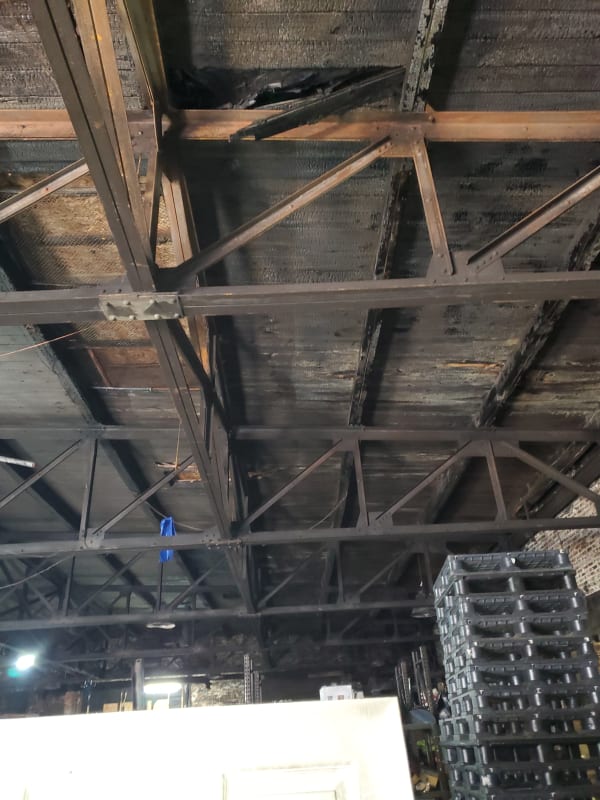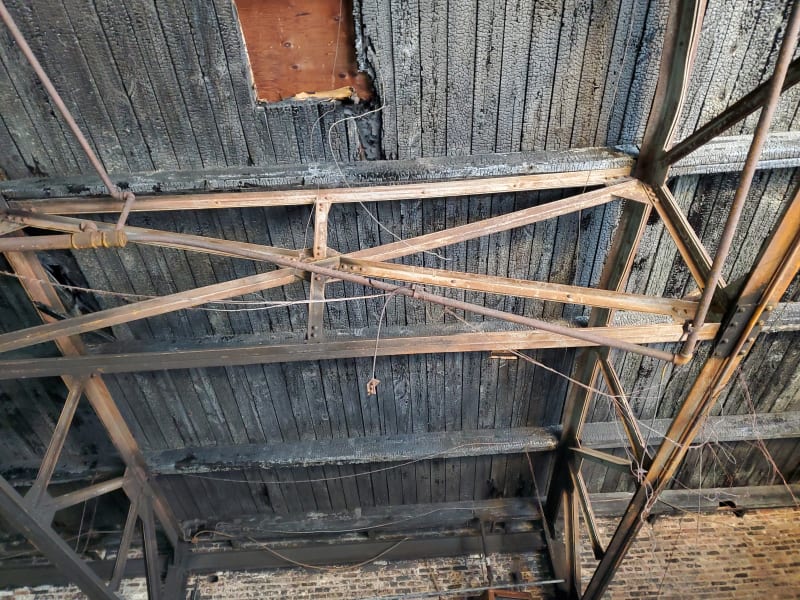Hi,
I was hoping to get some recommendations on how to fix one steel roof truss that has buckled top chord in 3 bays and fire likely diminished the adjacent truss and brace truss at same location. Trusses spanning about 75'. It seems that the owner may be OK with putting a beam under the buckled truss but I'd like to offer a solution that may be around the same cost and no beam with columns. It's a beer warehouse, I wouldn't want columns in a warehouse.
Good ways to shore. All the roof in that area is coming off and getting replaced as well.
I was hoping to get some recommendations on how to fix one steel roof truss that has buckled top chord in 3 bays and fire likely diminished the adjacent truss and brace truss at same location. Trusses spanning about 75'. It seems that the owner may be OK with putting a beam under the buckled truss but I'd like to offer a solution that may be around the same cost and no beam with columns. It's a beer warehouse, I wouldn't want columns in a warehouse.
Good ways to shore. All the roof in that area is coming off and getting replaced as well.



